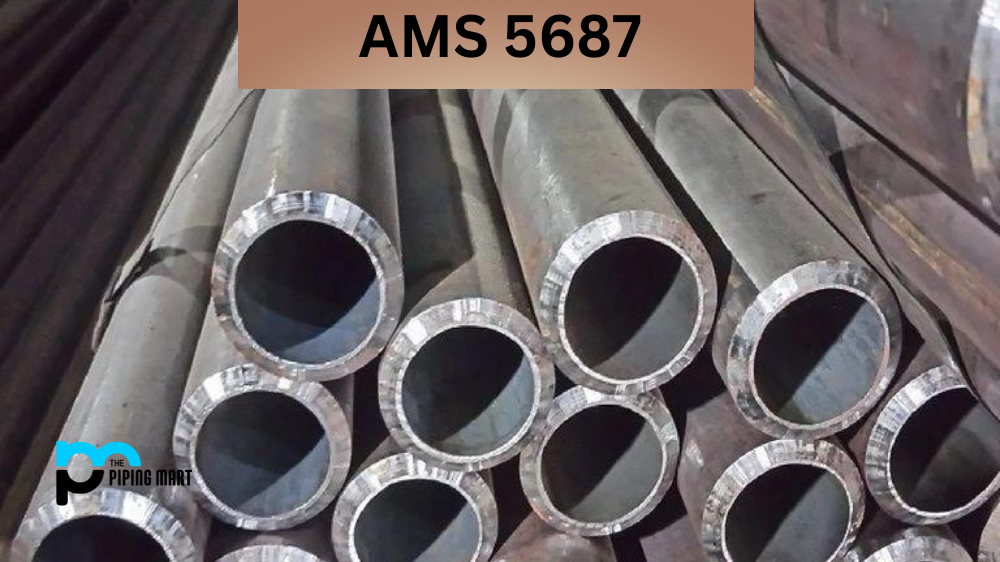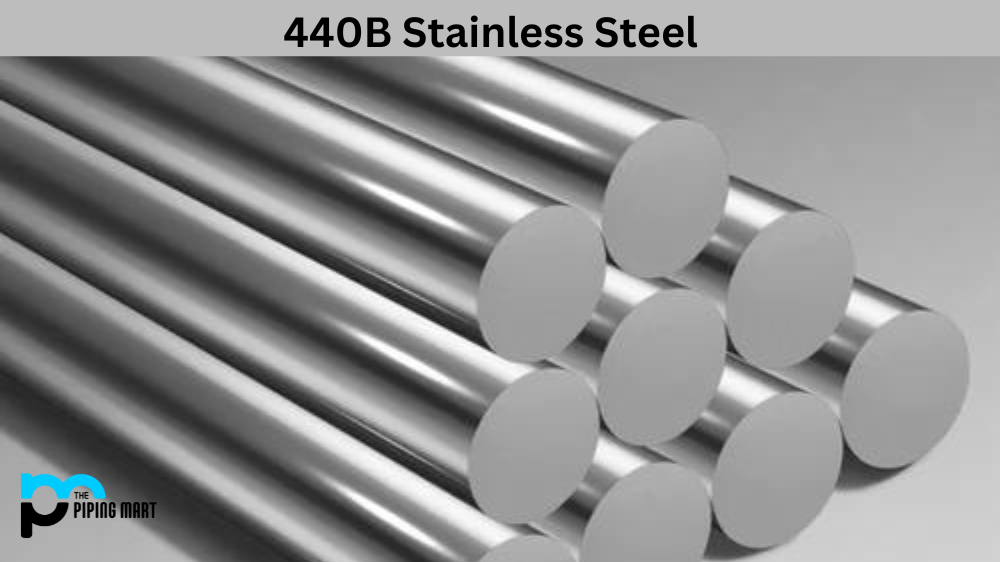If you are in the metalworking industry, you might have encountered the acronym AMS5687. You may have even dealt with this particular alloy in your machining operations. But what exactly is AMS 5687, and what makes it so special? This blog post will delve into the composition, physical and mechanical properties, uses, hardness and heat treatment of AMS5687. By the end of this article, you will have a solid understanding of what AMS 5687 is all about.
What is AMS 5687?
AMS5687 (also known as Inconel 600 alloy) is a high-performance stainless steel alloy designed to withstand extreme temperatures and harsh environments. Made from a combination of iron, chromium, and nickel, this metal is known for its outstanding resistance to corrosion, oxidation, and wear. Its superior properties make AMS 5687 an excellent choice for applications such as jet engines, gas turbines, heat exchangers, and other high-stress components. With its ability to perform in even the most challenging conditions, it’s no wonder why AMS 5687 is considered a top choice for engineers and manufacturers worldwide.
What Form Is AMS 5687 Available at Piping Mart?
- Nut
- Bar
- Bolt
- Pipe
- Screw
- Tubing
- Valves
- Stud Bolts
- Washers
- Flanges
- Fasteners
- Electrodes
- Stud Bolts
- Sheet Plates
- Pipe Fittings
- Forged Fitting
- Instrumentation Fittings
AMS 5687 Composition
AMS 5687 is a nickel-chromium-cobalt-molybdenum alloy known for its excellent high-temperature strength and resistance to oxidation and thermal fatigue. This alloy also features low thermal expansion and good corrosion resistance. The typical chemical composition includes 19-21% chromium, 9-10.5% cobalt, 5-6.5% molybdenum, 1-1.5% iron, 0.75-1.25% silicon, 0.08% carbon, 0.015% phosphorus, and 0.015% sulfur.
| Element | Min | Max |
| Carbon | — | 0.10 |
| Nickel | 72.0 min | |
| Chromium | 14.0 | 17.0 |
| Iron | 6.00 | 10.00 |
| Silicon | — | 0.50 |
| Manganese | — | 1.00 |
| Sulfur | — | 0.015 |
| Copper | — | 0.50 |
AMS 5687 Physical Properties
AMS 5687 has a density of 7.94 g/cm3 and a melting point of 1390°C. Its thermal expansion coefficient is minimal, so it can withstand heat fluctuations without cracking or warping. Its thermal conductivity is 13 W/m·K, which is relatively low compared to other alloys. This makes it ideal for applications where heat is produced and dissipated, such as in turbine engines, exhaust systems, and heat exchangers.
| Physical Properties | °F | British Units | °C | Metric Units |
| Density | Room | 0.304 lb./cubic in. | Room | 8.43g/cubic cm |
| Electrical Resistivity |
70 200 400 600 800 |
40.6 microhm-in. 40.9 41.5 42.2 43.0 |
21 93 204 316 427 |
1.03 microhm-m 1.04 1.05 1.07 1.09 |
| Mean Coefficient of Thermal Expansion |
70-200 70-400 70-600 70-800 |
7.4 microinches/in.-°F 7.7 7.9 8.1 |
21-93 21-204 21-316 21-427 |
13.3 x 10(-6)m/m·K 13.9 14.2 14.6 |
| Thermal Conductivity |
70 200 400 600 800 |
103 Btn-in./ft².-hr.-°F 109 121 133 145 |
21 93 204 316 427 |
14.8 W/m·K 15.7 17.4 19.2 20.9 |
| Modulus of Elasticity |
Room | 30.0 x 10(6) psi | Room | 207 GPa |
AMS 5687 Mechanical Properties
AMS 5687 has impressive mechanical properties, such as high tensile strength and excellent creep resistance. The tensile strength of this alloy ranges from 1800-2200 MPa at room temperature. Its creep resistance allows it to withstand constant exposure to heat at high temperatures, making it ideal for use in the aerospace industry. It also has good fracture toughness, making it less prone to cracking and breaking under stress.
| Density | 8.47 g/cm3 |
| Melting Point | 1413 °C (2580 °F) |
| Tensile Strength | Psi – 95,000 , MPa – 655 |
| Yield Strength (0.2%Offset) | Psi – 45,000 , MPa – 310 |
| Elongation | 40 % |
AMS 5687 Equivalent
- UNS N06600
- AMS 5540
- ASTM B 168
- ASME SB 168
- 10204
- EN 2.4816
AMS 5687 Thermal Properties
| Thermal Properties | |||
| CTE, linear 20°C | 13.3 µm/m-°C | 7.39 µin/in-°F | 20-100°C |
| Specific Heat Capacity | 0.444 J/g-°C | 0.106 BTU/lb-°F | |
| Thermal Conductivity | 14.9 W/m-K | 103 BTU-in/hr-ft²-°F | |
| Melting Point | 1354 – 1413 °C | 2470 – 2580 °F | |
| Solidus | 1354 °C | 2470 °F | |
| Liquidus | 1413 °C | 2580 °F | |
AMS 5687 Uses
Due to its excellent high-temperature strength, oxidation, and creep resistance, AMS 5687 has numerous applications in various industries. It is commonly used in the aerospace and aircraft industry as a turbine component due to its ability to withstand high temperatures and resist thermal fatigue. It is also used for exhaust systems, heat exchangers, and furnace components. Its excellent corrosion resistance makes it suitable for use in marine environments.
AMS 5687 Hardness
AMS 5687 has excellent hardness properties, which can withstand high stresses and wear-related damage. Its Rockwell hardness ranges from B92-B100. It is also resistant to deformation, allowing it to retain shape under high loads and pressure.
AMS 5687 Heat treatment
AMS 5687 can be heat-treated by solution annealing, followed by ageing. Solution annealing is the process of heating the material to a temperature above its recrystallization temperature and then cooling it to room temperature to allow the crystals to reform. Ageing involves heating the material to a specific temperature for a certain amount of time and then cooling it down to allow the desired microstructure to form. These heat treatment processes improve the mechanical properties of AMS 5687.
Conclusion
AMS5687 material is a nickel-chromium-cobalt-molybdenum alloy that is used in a wide range of industries. Its high-temperature strength, creep resistance, oxidation resistance, and excellent mechanical properties make it ideal for aerospace industries, heat exchangers, exhaust systems, and furnace components. Its corrosion resistance and hardness also allow it to withstand wear and tear. By understanding the composition, properties, uses, and heat treatment methods of AMS 5687, manufacturers and metalworkers can make informed decisions on how to best utilize this alloy for their applications.

Abhishek is a seasoned blogger and industry expert, sharing his insights and knowledge on various topics. With his research, Abhishek offers valuable insights and tips for professionals and enthusiasts. Follow him for expert advice on the latest trends and developments in the metal industry.




